每日观察:关注App Store上线5周年等消息(7.11)
1)据mobile-ent报道,苹果日前宣布App Store上线5周年,该应用商店于2008年7月10日在62个国家/地区上线,最初仅有500款应用。当年8月份,世嘉游戏《Super Monkey Ball》获得30万次下载量,收益达300万美元;当年9月份,App Store应用全球下载量超过1亿次。
2009年1月,App Store应用下载量超过5亿次,应用总数增长至1.5万。4月份应用下载量突破10亿次,9月份达到20亿次,应用数量达8.5万。
2010年《愤怒的小鸟》进入App Store,iPad也在当年4月面世,截止当年6月App Store已向开发者支付了10亿美元,下载量超过50亿次,应用数量为22.5万,其中iPad应用为1.1万。当年12月份,《愤怒的小鸟》成为年度下载量最高的游戏。
2011年初App Store下载量达100亿次,3月份iPad 2问世,该应用商店向开发者支付收益达20亿美元。10月份iPhone 4S问世,App Store应用数量达50万,下载量超过180亿次,平均每月下载量超过10亿次。《愤怒的小鸟》和《水果忍者》成为2011年下载量最高的游戏。
2012年苹果向开发者支付收益达40亿美元,3月份App Store下载量达250亿次,9月份iPhone 5面世,iPad Mini和支持Retina Display的iPad 4也在10月份登台。《Temple Run》和《Draw Something》成为2012年下载量最高的应用。
2013年5月App Store下载量达500亿次,平均每秒下载量超过800次,应用数量达85万。截止6月份,苹果向开发者支付收益超过100亿美元。
2)IAB和IHS最近数据显示,2012年全球移动广告收益为89亿美元,比2011年(53亿美元)增长将近83%。
但与互联网广告收益相比,移动广告市场规模仍然有限。IAB指出第一季度仅美国地区的互联网移动广告收益就达到96亿美元,而整个2012年的美国移动广告收益也只有35亿美元。
展示性广告在2012年所有移动广告收益中占比38.7%,即34亿美元,而基于信息的广告收益则持续下滑,目前仅占比8.5%,即7.565亿美元。
从地理位置来看,发展最快的市场仍是移动互联网最发达的地区,例如美国移动广告收益增长111%,西欧达91%。但最大的移动广告市场却是包括中国在内的亚太地区。
3)据pocketgamer报道,塞尔维亚工作室Nordeus日前宣布旗下足球模拟游戏《Top Eleven》在Android平台的全球下载量突破1000万次,该游戏在Facebook、iOS和Android平台的月活跃用户超过1100万,玩家留存率达25%,并表示公司计划在都柏林和马其顿成立工作室。
观察者认为该工作室同Real Madrid、利物浦、Arsenal和AC米兰等球队俱乐部的合作,是这款游戏获得成功的重要原因。
4)据日经新闻报道,日本社交游戏公司GREE将关闭位于英国的欧洲总部。除了英国工作室之外,GREE还表示将关闭位于圣保罗、阿姆斯特丹和迪拜的工作室(游戏邦注:这三个工作室并没有招聘当地员工,主要用于推广GREE游戏)。
日经新闻还指出,GREE已经在韩国裁员30-40人(约占该公司韩国员工的30%);GREE目前总共已关闭5家海外工作室(英国、巴西、荷兰、迪拜、中国),在国际市场已走向战略收缩状态。除了日本,GREE目前仅在美国、加拿大、韩国和新加坡这四个海外国家运营项目。
5)据gamasutra报道,暴雪社区管理员Bashiok日前通过论坛透露,《魔兽世界》将推出游戏内置商店,以微交易方式出售特定道具。
6)据mobile-ent报道,内容聚合器MyLife最近调查发现,有51%社交网络用户比两年前更频繁登录/访问社交网站,27%用户一醒来就刷新查看社交网络;35%受访者平均每天在社交网络或阅读/回复个人邮件上至少投入31分钟;42%受访者拥有多个社交网络帐号,其中18-34岁群体占比61%。
在那些计划停用或者暂时离开社交网络的用户中,有41%用户表示自己是因为社交网络更新内容不重要或者与己无关而离开,有32%表示是因为社交网络占用了自己太多时间。
55%拥有多个社交网络帐号的女性更易于利用社交媒体同过去的熟人联系,而男性的这一比例仅为42%。
7)国内知名第三方安卓应用商店应用汇(AppChina.com)首席运营官袁聪日前透露,应用汇已经实现可观的盈利。
袁聪表示,应用汇一开始几乎尝试了应用商店所有可能的盈利模式,直到2012年中期,手机网游开始初露苗头,应用汇打通了支付环节,才开始布局联运游戏。经过近一年的摸索,联运游戏业务已经占到应用汇总收入的半壁江山,增长势头迅猛。(本文为游戏邦/gamerboom.com编译,拒绝任何不保留版权的转载,如需转载请联系:游戏邦)
1)By the numbers: Apple App Store celebrates five-year anniversary
by Zen Terrelonge
From 500 apps to more than 900,000.
Apple is widely regarded as the company that invented the smartphone market and apps, so check out its success story below as the App Store celebrates its fifth anniversary.
2008
The App Store launched with 500 apps in 62 countries on July 10th.
eBay, Facebook, Shazam and Yelp were among pioneering members of the platform, helping the firm reach ten million downloads in the first weekend.
By August, Sega’s Super Monkey Ball had topped 300,000 downloads to put $3m in the bank for the studio, while the total number of app downloads passed 100m globally in September.
Music discovery app Shazam secured 1.5m downloads by the end of September, with users tagging 20m songs and Facebook became the most downloaded app at the end of the year to approach 5m downloads.
2009
Global app downloads went on to pass 500m in January, while the number of apps had grown to 15,000.
Total downloads topped one billion in April. The iPhone 3GS was announced in June, at which time the App Store housed 50,000 apps and experienced 3,000 downloads a minute.
In September, the App Store reached two billion downloads and stored 85,000 apps from 125,000 developers.
Facebook retained its title as the year’s most downloaded app alongside Paper Toss.
2010
February marked the introduction of little-known game Angry Birds and the iPad went on sale on April, marking what was going to become the beast of the tablet market for years to come.
The App Store expanded to 90 countries in pay and $1 billion had been paid to developers in June. The summer month also saw App Store downloads pass five billion and 225,000 available apps, with 11,000 solely for iPad.
Cut the Rope launched in October and became one of the most popular games of the year, while Instagram launched as an exclusive later in the month.
Angry Birds became the year’s most downloaded game in December.
2011
The App Store celebrated the New Year in style with ten billion downloads, while Paper Glider was the ten-billionth app downloaded.
The iPad 2 was announced in March alongside the 65 million iPad only milestone, and developers receiving a payout of $2 billion.
In July, the App Store was extended to 123 countries and Temple Run was launched in August to pass 100 million downloads and become one of the highest-grossing App Store apps.
The iPhone 4S was revealed in October, as 500,000 apps were available. Downloads had topped 18 billion and over one billion apps were being downloads on the store each month.
Later in the month, Facebook launched for the iPad and became the first app to hit 100m downloads.
Angry Birds and Fruit Ninja were the year’s most downloaded games.
2012
It was a pleasant way to start the year for developers, who had been paid out $4 billion.
App Store downloads reached the big 25 billion in March, with Disney’s Where’s My Water? marking the milestone.
In June, the App Store became available in 155 countries and the iPhone 5 and fifth-generation iPod Touch launched in September.
The iPad Mini and iPad 4 with Retina Display made their debuts in October.
More than two billion apps were downloaded in December and Temple Run and Draw Something are the year’s most downloaded apps.
2013
The App Store reached a massive 50 billion downloads in May, with more than 800 a second, while over 850,000 apps are available for the iPad.
As of June, developers have been paid more than $10 billion.
It’s July 10th, and Apple is celebrating five years of the App Store!(source:mobile-ent)
2)IAB: Mobile Ad Revenue Pushes $9B Globally In 2013 After 83% Surge In 2012 Thanks To Smartphone Boom
INGRID LUNDEN
While smartphone growth may be slowing down in some developed markets, the services that people are using on the devices continue to grow fast, and that is having a direct impact on the growth of mobile advertising. Globally, the mobile ads market brought in revenues of $8.9 billion in 2012 — a rise of nearly 83% on 2011′s revenues of $5.3 billion, according to figures out today of the IAB and IHS.
To give these mobile ad figures some perspective, they are still small in comparison to the revenues coming in from Internet advertising. According to the IAB, Internet ad revenues for Q1 in the U.S. alone were $9.6 billion. The U.S. for all of 2012 is estimated to have brought in $3.5 billion in mobile ad revenues.
While we have seen a drive towards more interactive and media-rich, ad-tech fuelled innovations in the medium of mobile ads, search remains the biggest of all ad formats, accounting for over half of all revenues at 52.8%, or $4.7 billion, up slightly on last year’s percentage of 51.1%. And the analysts did not spell it out, but the supremacy of search ads means that
Google, the worldwide leader both in search and in smartphones with its Android platform, remains on top.
We reached out to IHS’s Daniel Knapp, director of advertising research at IHS and author of the report, to ask for a little more detail on top networks. He says that after Google, the other two important networks for the year were Millennial and Amobee. IHS is not releasing actual proportions for market share, however.
Facebook only launched ads in Q2 but Knapp says that if we take aggregated mobile ad revenue for the quarters where Facebook was active, the social network accounted for a 21.2% share in display revenues (the only area among search, display and messaging where it is currently active).
Display ads accounted for 38.7% of all mobile ad revenues, or $3.4 billion, in 2012 while messaging continues its decline and now accounts for just 8.5%, or $756.5 million. Before the rise of the mobile Internet and apps usage, messaging-based ads were by far and away the most popular of formats; between 2011 and 2012 it grew the slowest in terms of actual revenues at 40.2%, compared to 87% and 89% respectively for display and search.
The rise of mobile ads revenue comes from a perfect storm of a couple of forces. In addition to growing smartphone penetration — with markets like the U.S., UK and others in Europe now tipped into smartphone majorities — there is also the fact that people are actually using them more than ever before, for an ever-wider range of uses. At the same time, those who produce content for mobile devices continue to see an increasing push from consumers for “free” content that they do not need to pay for, which in turn often gets supported instead by advertising.
At the same time, the IAB points out that there is a growing trend for more consolidated and savvy investing on the part of media buyers, who are following where users are going and making large ad buys across different networks and different platforms.
“Mobile is coming into its own as a powerhouse advertising medium,” says Anna Bager, Vice President and General Manager, Mobile Marketing Center of Excellence, U.S. IAB, in a statement.
“Today’s advertising is happening in a world where ad campaigns can be planned and bought across global networks on multiple media, but the massive and continuing acceleration of mobile’s international impact provides new and exciting frontiers for content and communication.”
In terms of geographical breakdown, the biggest-growing markets continue to be those where mobile internet usage is the strongest: revenues in the U.S. rose 111% and Western Europe 91%.
Interestingly, however, when it comes to the single-biggest region for mobile ads, it’s Asia Pacific — which includes the biggest smartphone market in the world, China:
Looking at how that value plays out in terms of growth, you can also see that right now we’re still in a stage of the biggest continuing to grow the fastest; those countries with lower smartphone penetration and mobile data usage are seeing significantly smaller increases.(source:techcrunch)
3)Nordeus’ Top Eleven tops 10 million downloads on Android
by Matthew Diener
The Serbian studio Nordeus announced that its tremendously successful football sim Top Eleven has topped 10 million downloads on Android devices worldwide.
Although Nordeus didn’t divulge what percentage of its total downloads this Android milestone accounts for, it recently said that Top Eleven has “more than 11 million monthly active users” spread across Facebook, iOS, and Android.
This explosive growth in its userbase has spurred on a wave of expansion for Nordeus, with the developer now looking to open offices in Dublin and Macedonia.
Top marks
Underlinings Nordeus’ success, Top Eleven boasts a 25 percent retention rate amongst its players.
This is due, in part, to Nordeus’ partnerships with football clubs like Real Madrid, Liverpool, Arsenal, and AC Milan – all of which help to bring an authentic gameplay experience to the cross-platform football management sim.(source:pocketgamer)
4)GREE Is Further Cutting Down On Its International Business (Report)
by Dr. Serkan Toto
Just last week The Nikkei reported about sales and profit sliding significantly for GREE between April to June (ahead of the company’s official announcement of its financial results for that quarter).
Back then, Japan’s biggest business publication reported that – as a reaction – 20 or so first-party social games will be closed down, followed by TechCrunch learning today that GREE will shut down its European HQ in London.
Prior to all of this, GREE ended operations in China in June and laid off at least 25 people in its American HQ in San Francisco.
And just now The Nikkei has reported online that this is not all: apart from the UK office, GREE is said to have decided to close down its presences in Sao Paulo, Amsterdam and Dubai.
(These three offices were used only for marketing GREE games and didn’t have local staff.)
The Nikkei also says that GREE is ready to let go a total of “30-40 people” in South Korea (that’s roughly 30% of GREE’s South Korean workforce). The Seoul office does create mobile games by the way, i.e. this one.
So GREE is sure pulling out the axe to counter the negative trend in sales and profit – so far outside Japan only.
To summarize, GREE is closing or has already closed a total of five international offices (in the UK, Brazil, The Netherlands, Dubai, China) and is laying off or has already laid off people in two (in the US and South Korea).
As a result, GREE will now be operating offices in a total of four countries (outside Japan): the US, Canada, South Korea, and Singapore.(source:serkantoto)
5)World of Warcraft to monetize experience buffs
By Kris Ligman
Blizzard Entertainment will soon be rolling out an in-game store for its flagship World of Warcraft, testing the microtransaction waters with monetized experience buffs and a new way to obtain specific items.
As revealed on the forums this morning by Blizzard community manager Bashiok, the new in-game store is a spiritual extension of its existing Pet Store, which sells pets and mounts for avatars.
“We think everyone would appreciate the convenience of being able to make such purchases without having to leave the game,” said Bashiok, who noted that there would be “quite a bit of work involved in retrofitting” in order to integrate the store’s items into the new system.
The in-game store will be the initial staging ground for two new items, the experience buff and an alternative method to acquire Lesser Charms of Good Fortune, “in Asian regions, at the outset.”(source:gamasutra)
6)INFOGRAPHIC: Social networks make 56 per cent of users anxious
by Zen Terrelonge
Suffer from fear of missing out, which encourages a quarter of users check accounts as soon as they wake up.
Social networks like Facebook and Twitter may have started as desktop-focused businesses, but the rivals continue to eagerly enhance their mobile services.
In fact, social networks are increasingly becoming mobile-only, with Instagram and Foursquare both app-based sharing platforms.
Content aggregator MyLife has surveyed Stateside social network users to find a huge 56 per cent suffer from a fear of missing out, which has prompted them to consider a holiday from their accounts.
Meanwhile, 27 per cent check their updates as soon as they wake up, likely reaching for the smartphone that was previously tucked cosily beneath their pillow.(source:mobile-ent)
下一篇:列举手机游戏开发者需知的5项技能

























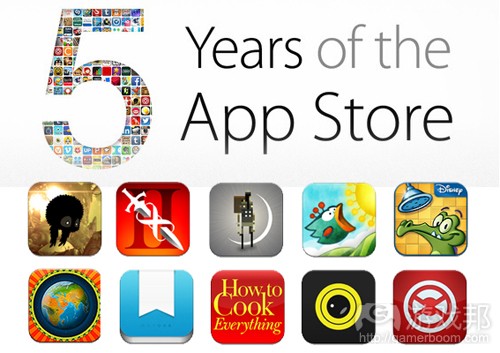

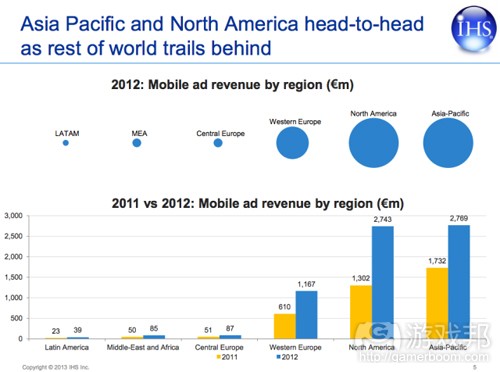
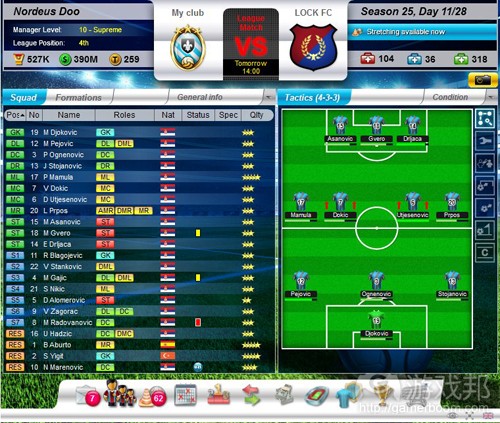
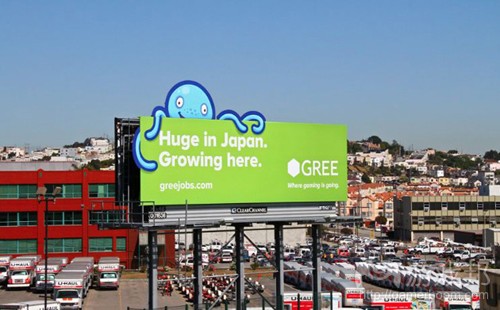
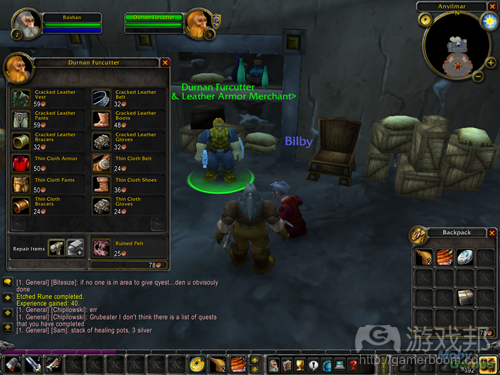















 闽公网安备35020302001549号
闽公网安备35020302001549号